Chrysler 440 Engine Guide

Meet Austin
Austin has been a muscle car enthusiast since an early age with his Dad having a collection including a 1965 Mustang, 1968 Mercury Cougar, and a 1969 Mustang Mach 1 among many others. Austin received a technical writing degree from University of Colorado Denver with the intentions of becoming an automotive journalist. His automotive knowledge, enthusiasm, and hands on experience allow him to craft detailed, accurate, and high-quality articles for the passionate Muscle Car Club audience.
While Chrysler wasn’t the first in the big block game, they certainly played it well. Ultimately, the Hemi comes to mind first when thinking about performance Chrysler engines. However, in 1966, a new engine entered the stable which disrupted the 426 Hemi’s dominant position. The Chrysler 440 V8 is the largest big block engine in Chrylser’s RB wedge V8 engine series. With 7.2 liters of displacement, the 440 V8 is a beast of an engine. Despite being the standard engine in the Dodge Coronet R/T, Charger R/T, and Plymouth Belvedere GTX, it produced nearly the same amount of power as the 426 Hemi despite being significantly less expensive.
Beyond its impressive factory performance, the 440 V8 was reliable and highly modifiable as well. The Chrysler 440 is extremely well-engineered, especially considering that the B-Series was Chrysler’s first attempt at a wedge V8. The 440 didn’t have any truly glaring major issues and most of the issues that arise today are the result of age. The Chrysler V8 is also an extremely modifiable engine with massive aftermarket support. Cam upgrades, carburetor upgrades, and intake manifold upgrades are all extremely popular 440 Mopar modifications that will allow you to get the most out of your Chrysler big block.
Chrysler B/RB-Series V8 History
Chrysler has a reputation for producing wicked V8 engines, and doing so differently than the competition. The word “Hemi” is universally known and synonymous with big power. Since the end of World War II, the Hemi engine has been a staple in Chrysler’s engine catalog and continues to be so today. But, at the end of the 1950s, Chrysler realized that the Hemi wasn’t a sustainable engine for mass-produced consumer cars. Hemi engines might be efficient, durable, and powerful, but they are also costly to produce and slow to build.
Chrysler had to take a long, hard look at their V8 engine offerings and find a more numbers-oriented solution. By then, Ford and GM were selling in big numbers. The Ford Y-Block V8 replaced the very popular Ford Flathead in 1954 and was inexpensive to produce and a versatile engine for family cars and performance cars alike. At the same time, GM released their new Chevy small-block which would go on to dominate the muscle scene for decades. At that point, Chrysler knew they needed a competitor.
Ultimately, Hemi’s were out of the running for their expensive and time-consuming production process. Since Chrysler needed to put out an affordable V8 engine quickly, they adopted some design decisions from their competitors. Chrysler settled on a wedge design for their newest generation of V8 engines. The Chrysler B-Series and RB-Series V8s were the results of that revelation.
Chrysler 440 V8 Engine Design
The Chrysler B-Series was divided into two different block designs. The primary difference between the two designs is deck height. The low-deck block series was called the Chrysler “LB” Series, otherwise simply known as the “B” series, while the raised deck block, called the Chrysler “RB” had a top deck height 0.725” higher. The 440 Chrysler engine falls into the latter category. The Chrysler big block features a deck height of 10.25” and a massive 4.8” bore pitch. Chrysler designed the RB series to allow for bore expansion to increase displacement throughout the engine’s build life.
The Chrysler RB Series consisted of four big block V8 engines with different displacements. The big four include the Chrysler 383, Chrysler 413, Chrysler 426, and Chrysler 440. All of the Chrysler RB engines feature a five-bolt main arrangement with a deep skirt design to prevent excessive flex, ultimately making the Chrysler big block V8 series very durable. Chrysler also made edits to the intake and exhaust ports, shortening them, which resulted in weight savings.
There was also an emphasis on easy serviceability with the Chrysler B-Series which resulted in design changes from earlier Chrysler V8s. The Chrysler B-Series distributor and oil pump were relocated from the rear to the front, making servicing easier and freeing up clearance in the bay. Chrysler also opted to use stamped steel rocker arms which reduced production costs and kept reliability high. The stamped steel rocker arms were paired with hydraulic tappets to prevent the need for frequent adjustments.
440 Chrysler Engine Variants
The Chrysler 440 V8 was not an engine exclusive to the Chrysler brand. It was a V8 engine used in all of Chrysler’s sub-brands as well, including Dodge and Plymouth. The 440 V8 engine had a number of names depending on the brand that the engine was in. Initially, the 440 V8 was called the “TNT” when placed in Chrysler cars. The 440 Chrysler was also called the “Super Commando” in Plymouth cars, and the “Magnum” in Dodge vehicles. Despite its multiple different names, the 440 big block remained virtually unchanged between the different manufacturers.
When the Chrysler 440 engine was released in 1966, the RB engine series had already been in circulation for nearly a decade. At that point, Chrysler had nearly perfected their wedge V8 design. As a result, the Chrysler 440 big block featured only small changes between 1966 and 1969. However, a massive change would come in 1971 due to the Clean Air Act and the US government tightening the reigns on vehicle emissions standards.
1966-1968 440 Chrysler
In 1966, the Chrysler 440 engine was the largest V8 offering by Mopar. While it wasn’t quite as potent as the more exotic 426 Hemi V8, it produced only slightly less power for significantly less money. The 440 Mopar is a bored Chrysler 413 V8, with an increased bore of 4.320.” The 440 V8’s increased bore pronounced the characteristics of the short-stroke engine. It produced far more torque than its smaller-bore RB relatives.
In 1967, a high-performance version of the 440 Chrysler was introduced in the Plymouth Belvedere GTX, Dodge Coronet R/T, and Dodge Charger R/T. In comparison to the regular version offered in 1966, the Chrysler 440 HiPo came with a more aggressive camshaft and better-flowing cylinder heads.
1969 Chrysler 440 Six Pack
In 1969, Chrysler released a specialized version of the 440 V8 engine. The Chrysler 440 Six Pack, as it was called, received a number of significant upgrade that made it the most powerful variant of the 440 big block. The 440 Six Pack got its name from the fact that it features three two-barrel carburetors instead of the normal four-barrel carb found on the regular 440 V8. The Six Pack also received unique forged connecting rods, forged crankshaft, timing chain, valve springs, and Edelbrock high-rise manifold for the first half of the year.
The 440 Six Pack additions brought horsepower up to 390 and torque to 490 lb-ft. That is 15 more horsepower and 10 additional lb-ft of torque more than the standard Chrysler 440. The Chrysler 440 Six Pack was offered for another three years after 1969. 1970 and 1971 Six Pack V8s featured the same construction as the 1969 model. It was eventually neutered in 1972.
1972-1978 Chrysler 440 V8
By 1972, the true muscle car era was brought to an abrupt end. The Clean Air Act and other emissions-limiting measures had gone into place, essentially killing the high-displacement, high-horsepower V8. The 440 Chrysler didn’t escape unharmed. While performance certainly decreased for 1972, the difference in power between late 1960s and early 1970s 440 V8 engines really reflects the switch from gross to net horsepower ratings in 1972. While it might look like 1972 440 big blocks lost 50 horsepower, in reality, they lost far less.
To meet increasingly stringent emissions laws, Chrysler opted to decrease the 440 big block compression, which decreased emissions. This obviously caused a horsepower decrease as well. The 1972 base 440 big block V8 was rated at only 225 net horsepower. The 1972 440 V8 was offered in a few different configurations, all with different add-ons including dual snorkel carbs, dual exhaust, and cold air pak-equipped cars. Power ranged between 225 and 330 horsepower among the 1972 engines.
Chrysler 440 Beyond 1972
Beyond the first three years of the 1970s, the performance 440 V8 was essentially dead. It was both replaced by other, more efficient engines, like the 360 four-barrel and 413. Between 1972 and 1978, the 440 Chrysler V8 lost horsepower steadily, with the final power number in 1978 arriving at just 255 horsepower. In 1978, the last of the Chrysler RB engines rolled off of the production line and ended the Chrysler big block line.
Chrysler 440 Big Block Specifications
As we have already briefly covered, the Chrysler 440 big block is part of the Chrysler RB engine family which is based on the small deck height Chrysler B-Series. The Chrysler B-Series was the company’s first attempt at creating a 90-degree wedge V8 to compete with Chevy and Ford. The 440 V8, and all other RB-Series engines, feature cast iron construction. That includes the 440 block and 440 cylinder heads.
In comparison to the B-Series, the RB engine family has a larger cylinder bore of 4.32 inches. The Chrysler big block is a short-stroke engine, meaning that its cylinder bore is larger than its stroke. The Chrysler 440 has a bore of 4.32” and a stroke of 3.75.” That means it falls solidly in the over-square category. This makes the 440 V8 a very torque-heavy engine and produces power close to its 5,000 RPM redline.
The Chrysler 440 engine is an exceedingly strong and capable engine due to its internal components. Early 440 V8s had a forged crankshaft, forged aluminum pistons, and a mild camshaft that was easy on the valvetrain. There is a pretty wide variety of compression ratios for the 440 Chrysler as it changed often. In 1971, the standard 350 horsepower 440 had a compression ratio of 9.5:1, while the 440 Six Pack had a compression ratio of 10.3:1.
Mopar 440 Engine Common Problems and Reliability
It has to be said that the Mopar 440 V8 is an incredibly reliable and resilient engine. Major problems are few and far between due to the Chrysler 440s fantastic engineering. Its versatility and high reliability are proven by the fact that the 440 V8 was a common engine used in motor homes in the early 1970s. Chrysler designed the 440 with longevity in mind and that is reflected in multiple design decisions. For example, post-1969 440 V8s feature strengthening ribs cast into the block to prevent the block from cracking.
With that being said, there aren’t any problem-free engines, especially ones that are over 50 years old. Quite a few problems arise from old and detuned Chrysler 440 carburetors. Other Chrysler 440 owners have issues with the ignition system, with starting problems being a common issue.
Chrysler 440 Vacuum Leaks
Since the Chrylser 440 is such an old engine, there is little chance that the factory vacuum lines have made it until today unscathed. Cracked or leaking vacuum lines are extremely common on older engines that use rubber lines to maintain pressure in the engine. If even a single line is damaged or failing, the Chrysler 440 is known to run rough, run into carburetor problems, and have idling issues.
There are two primary places where vacuum leaks are exceedingly common on the Chrysler 440. Those include the lines running into the primary carb and into the intake manifold. There are a few ways that you can check for a vacuum leak on a Chrysler 440 engine. One way it to cover the carb at idle and see if it idles out. If the engine stays running with the carb blocked, it is likely that there is a vacuum leak somewhere. Alternatively, you can run water along the vacuum lines and listen for any suction.
The solution to any Chrysler 440 vacuum leak issues is pretty simple: replace the line. Surprisingly, Mopar still sells the majority of the major vacuum lines for the Chrysler 440. Since you can purchase them new, a 440 V8 vacuum leak is a relatively easy and inexpensive problem to fix.
Chrysler 440 Carburetor Issues
As with most carburated engines as old as the Chrysler 440, it is likely that the factory carb is well beyond its service life at this point. While it is likely a good idea to upgrade to a more modern carb arrangement like a new Holley 750CFM, most carb issues arise from tuning issues. An out-of-tune carburetor can lead to idling issues, loss of power, and overall poor running.
One of the most common issues associated with an out-of-tune carburetor is idling issues. Since idling problems can also be caused by vacuum leaks, the cause is often misdiagnosed. Since it is easier and less finicky to check for vacuum leaks, you should do that first before attempting to adjust your carburetor.
The idle screws on the 440 carburetors are the main source of carburetor-related idling problems. The fix is relatively straightforward. The 440 engine needs to be started in order to adjust the idle speed screws most effectively. First, you need to back the idle speed screws down on both until they are barely touching the cam arm on the throttle shaft. Then screw them both in the same exact number of turns and see if the car will start and run. Two full turns on each should be sufficient. If the 440 V8 is still not idling correctly, continue to turn the screws slowly and evenly until the 440 can maintain a steady idle.
Chrysler 440 Performance Upgrades
As the largest engine in the Chrysler RB big block lineup, the Chrysler 440 is a natural fit for performance junkies to fiddle with and upgrade. As a result, there is a massive aftermarket community out there for the Mopar 440 V8. With so many mods out there, it can be difficult to cut the list down to the essentials. Overall, the best 440 V8 modifications include the following:
- Upgraded Chrysler 440 intake manifold
- Larger Chrysler 440 carburetor
- Chrylser 440 headers
440 V8 Intake Manifold Upgrade
It is no secret that intake manifold technology has come a long way since 1966. Modern aftermarket Chrysler 440 intake manifold options flow much better than the antiquated cast iron one. There are a number of trusted retailers selling killer intakes for the 440 V8. Our pick goes to the Edelbrock RPM Performer. The RPM Performer is universally praised in the Chrysler 440 community for its impressive flow figures. While there is a debate on whether the single-plane or dual-plane variant of the Performer is better, either will do just fine.
Mopar 440 Carburetor Upgrade
A different 440 V8 carburetor is a must if you are typing to extract the maximum amount of horsepower. The size of carburetor that your specific 440 engine would work best with is entirely dependent on the other modifications that are done to it and how you want the engine to react.
Undersized carburetors increase throttle response at the cost of high-end horsepower. Oversized carburetors do the opposite. There is a sweet spot in between that you have to find. Most stock 440 owners recommend a Holley 650 CFM carb for responsiveness. For more top-end power, a Holley 750 is the carb that many enthusiasts would swap to back in the day. Either way, you’ll have to find the carburetor that works best with your setup.
Chrysler Big Block V8 Headers
Long tube headers have been a staple of the V8 engine essentially since their creation. There’s no doubt that they benefit the 440 big block quite a bit as well. The factory 440 exhaust manifold is unquestionably restrictive, not to mention heavy. By eliminating the primary source of exhaust restriction right after the exhaust ports, long tube headers will allow your big block to breathe much easier. That translates directly to more power.
In addition to the power increase, long tube headers can also change how your Chrysler 440 delivers its power as well. In comparison to the stock 440 exhaust manifold, long tube headers will increase mid-range and top-end performance. 1 7/8” headers seem to be the most common choice on 440 V8s. That size is a good balance between added breathability and scavenging performance.
Chrysler 440 Summary and Legacy
Despite being the slightly less Chrysler V8 engine variant, as opposed to the 426 Hemi, the Chrysler 440 could certainly still hold its own. Producing 350 horsepower and 480 lb-ft of torque, the Chrysler 440 is only slightly less powerful than its more popular hemispherical brother. The Chrysler 440 Six-Pack demonstrated that Chrysler had a strong grasp on high-performance wedge engines which would power some of the most notorious muscle cars of all time.
As the last engine available from the Chrysler RB engine series, the 440 went on to be an important engine outside of the muscle car arena. After the 440’s heyday had passed in the late 1960s, the 440 saw continued use in big-body sedans, pick up trucks, and even motorhomes. The versatility of the 440 made it a powerhouse in the Mopar fleet. If you enjoyed this article and are looking for more Chrysler engine content, check out our Chrysler 426 Hemi engine guide!

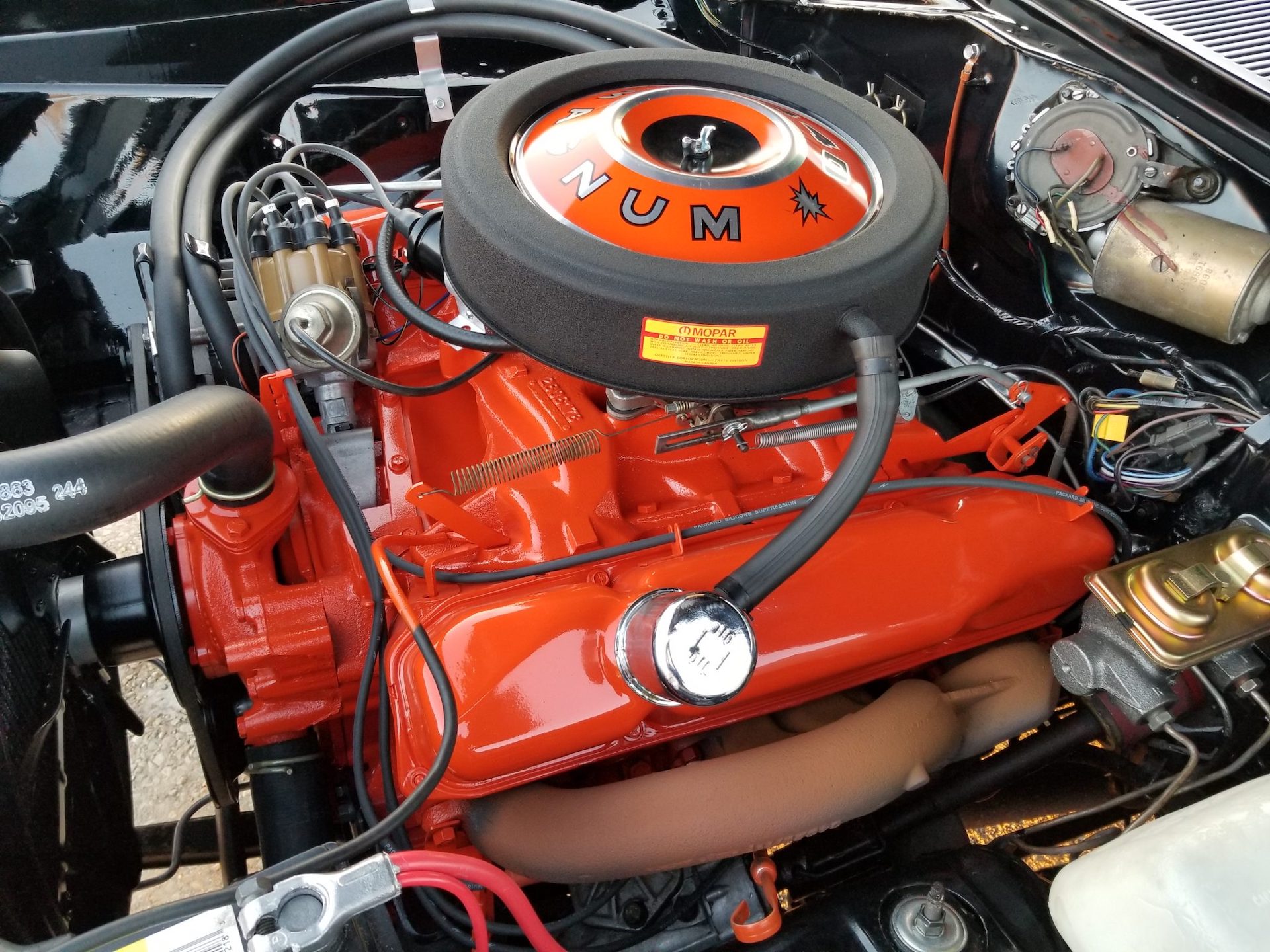
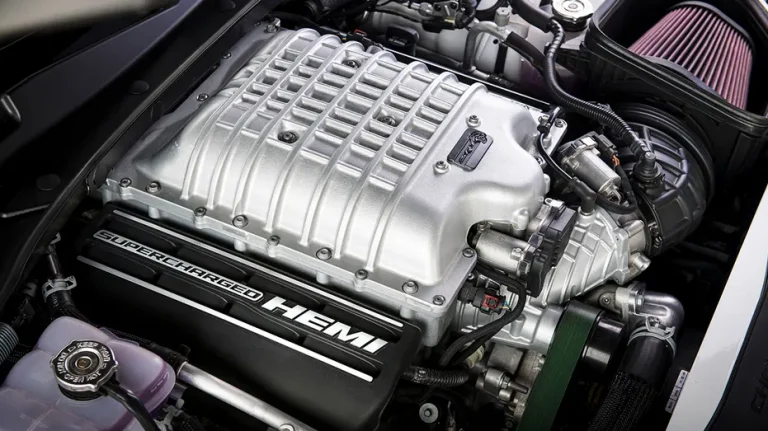
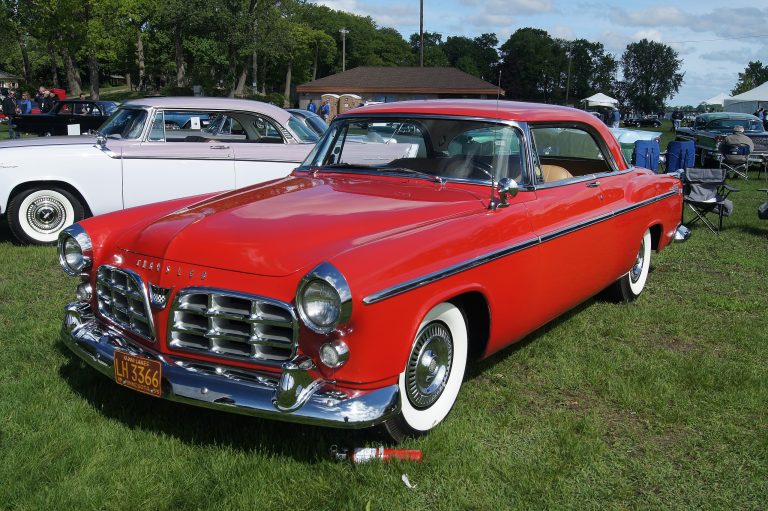
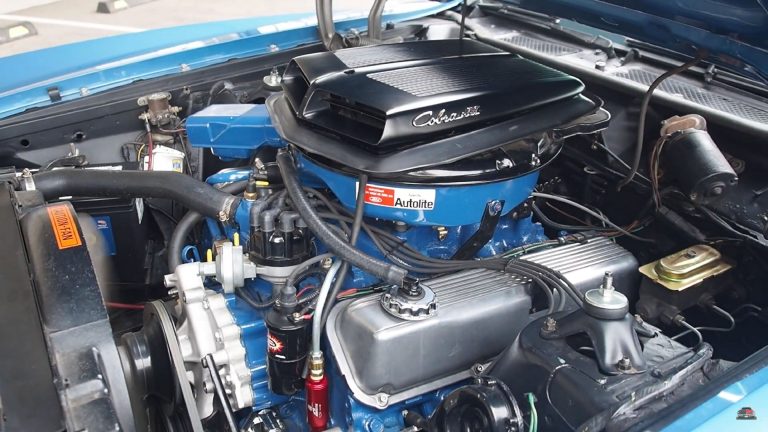
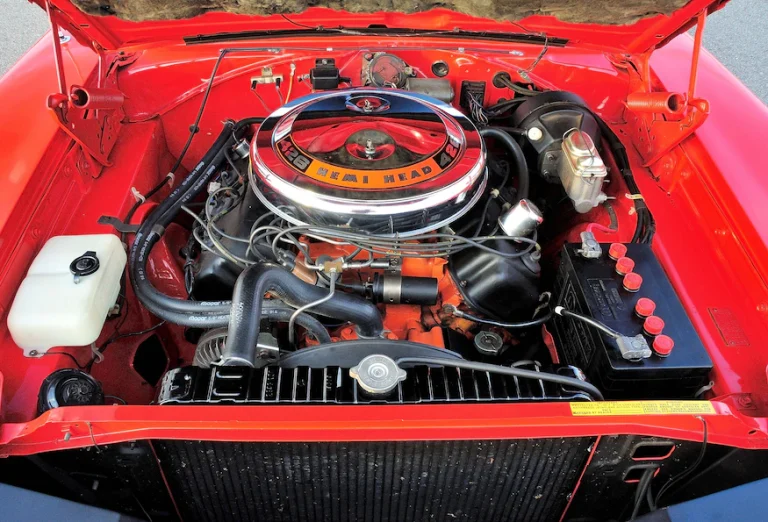
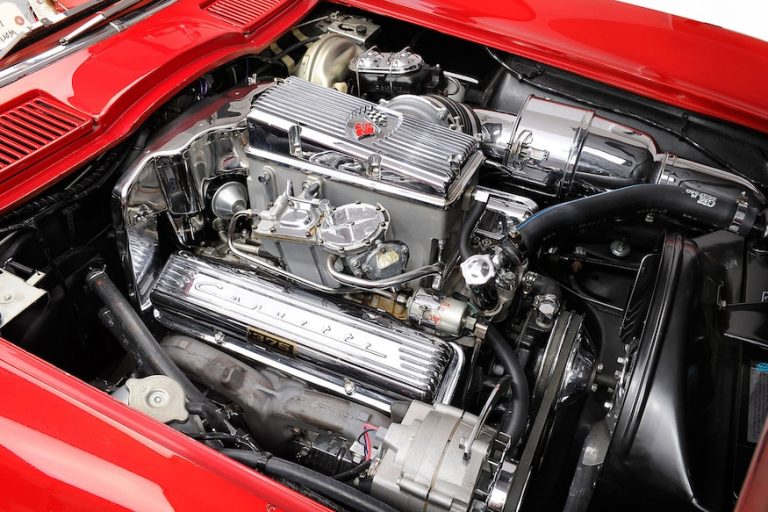
The 440 from 72-78 also dropped compression,different cam,heads,carb decreased power by a lot.The switch to net hp wasn’t the reason cars performed worse and lower power.
My 73 Charger Rallye 440 4bbl was the same performance as my 1968 Charger with the lower compression 2bbl only spec 2 barrel..This was 1984 and both cars were perfect working condition and I was even picky back then,those cars were original,like new cars.
Also they had different 440’s..They had from 1966-1971 a 440 4bbl with a small 595 cfm Holley carb ,different cam and valve springs than the High Performance 440 aka 440 Magnum,Chrysler 440 TNT and Plymouth 440 Super Commando.
The base 440 was 350 hp 480 torque…440 High Performance was 375 and 480 torque,it was actually a 420hp engine.The 440 6 barrel as well..
Ditto the 383 you had the 383 2bbl that cyl heads,cam,compression was far less than the 383 4bbl then you had the 383 High performance aka Magnum,Super Commando and Chrysler’s h.p 383(forgot the name at the moment).The 2 383 4bbl one had a Holley the other a Carter and the Carter was the high performance version..better valve springs,cam etc..they rated it as a joke 330 hp for the non hp version and 335 for the high performance version,the hp 383 was close to 400 hp as it was only a 4 tenths off a 440 car in the 1/4…
The 72-78 440’s were less powerful than the previous versions..Another example I had a 2 door 69 New Yorker with the base 350 hp 440 and 595 Holley 4bbl and single exhaust..It blew the doors off of my 1973 New Yorker 2 door with the 440 4bbl Thermoquad and duel exhaust! It left it standing still!! Again both were pristine cars,the 69 had 3.23 gears and ran 13.96 in the 1/4 mile bone stock! The 73 ran 16.70’s bone stock! So power was a lot less with the newer 440’s as different cam/heads/lower compression made them so-so..Yes the 69 New Yorker ran that time,I also had a 68 300 that was 1 tenth quicker all 2 door cars either 2.94 or 3.23 gearing.
I had a HEMI 4-speed when I got home from Vietnam. I then heard about the 440 6-Pac, so ordered a 1970 Charger automatic with my back pay. Besides having a noise in the engine – which the Dealership wouldn’t fix (all those big engines are like that!), performance was very sub-par, as compared to what the magazines were getting. Being a mechanic, I shorted out plug wires until I found the bad cylinder, pulled manifold & head, & pushed out that piston (what warantee) and got a new piston put on the rod. Having gone that far I had both heads (and manifold) milled. That got the performance up closer to where it should have been. I did a lot of other stuff over the summer, by that time I had a friend in the Ramchargers who helped. Eventually we could beat HEMI Road Runners. Great Fun!
I have a 1969 Crysler 300 convertible. It’s all original and is in very good shape. I have the 440 Magnum TNT engine which also has the disc brakes on the front that I confirmed came stock with the TNT engine. Can someone tell me around how many were made in 1969? I’m trying to figure out if I do have rare car.
Only info available is convertible production for 1969 300 was 1933 units. From what I’ve seen over the years, 440 TNT are common in Chrysler convertibles. That being said, convertibles are more likely to have survived the crusher compared to 4 and 2 door cars. 1969 GTX convertible was 540 units and 1969 Coronet RT convertible was 416 units. All being 440 HP or 426 Hemi. I would guess that 300 convertible with 440 TNT production to be significantly less than either of the mentioned convertibles above.
The 400 “B” block had the biggest bore of all Mopar big blocks at 4.342 compared to the 440’s bore of 4.320